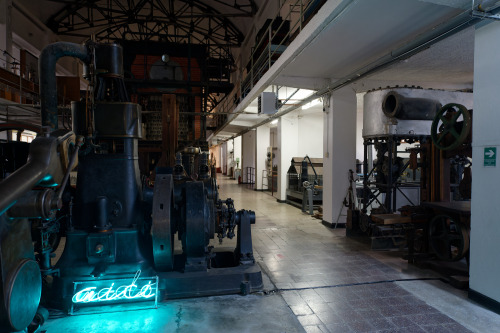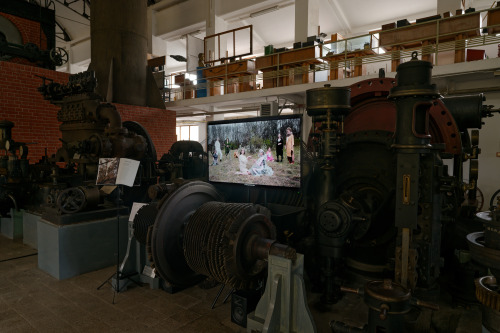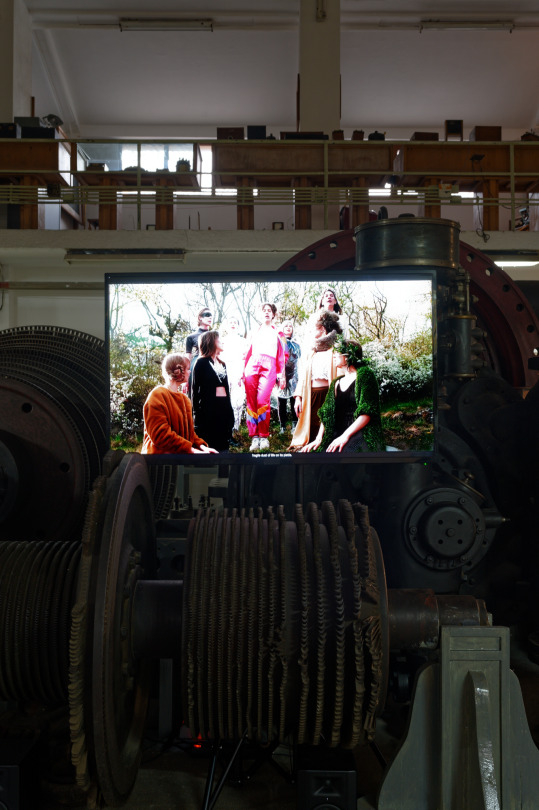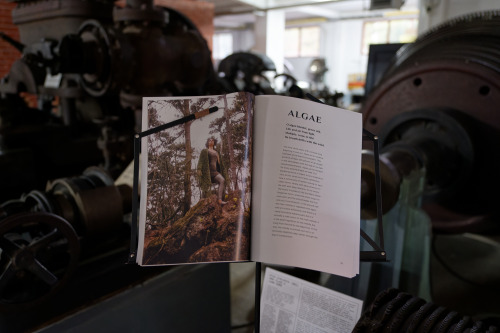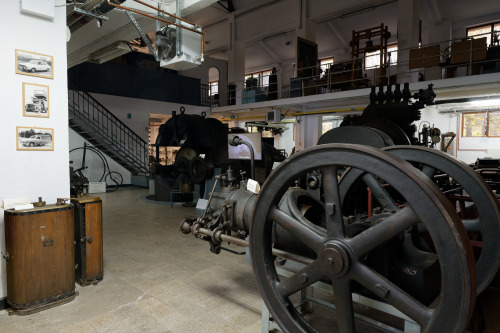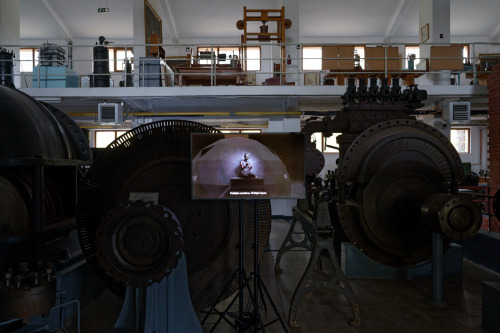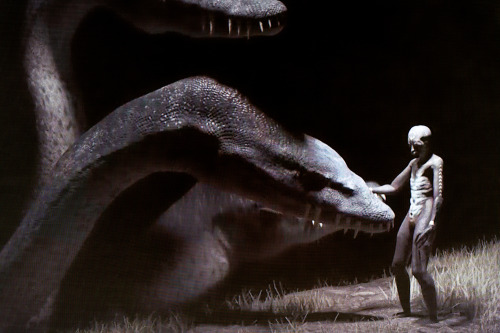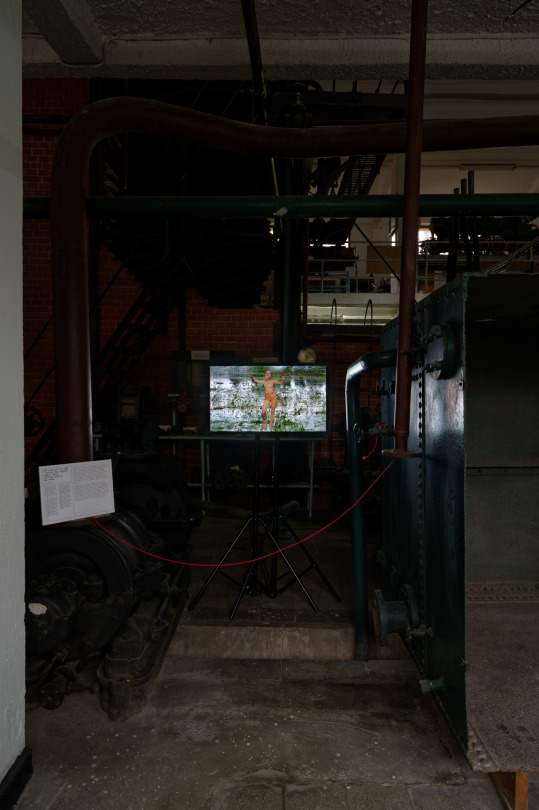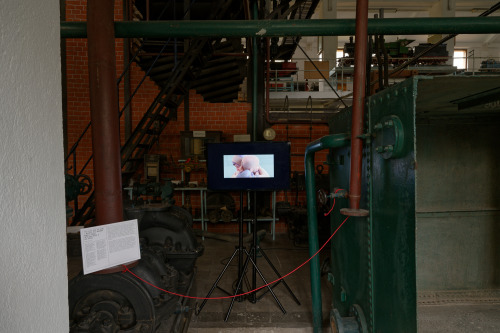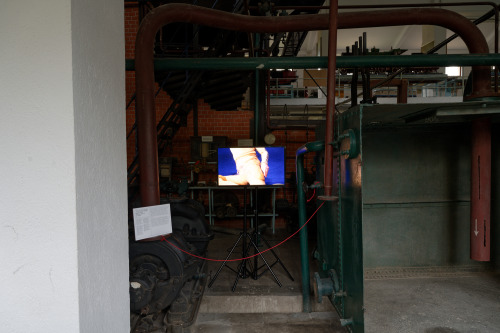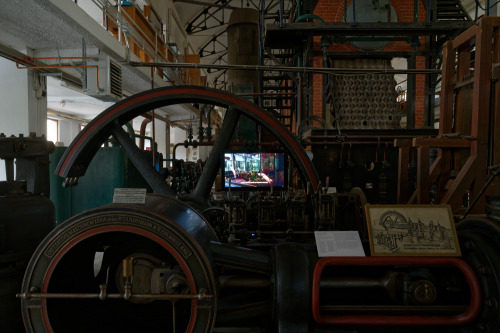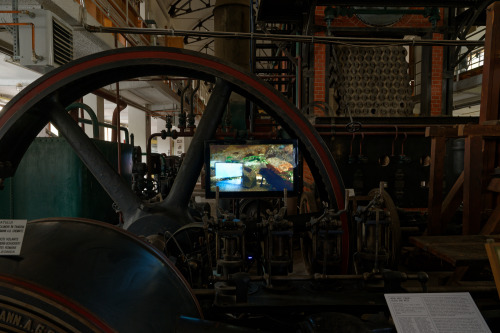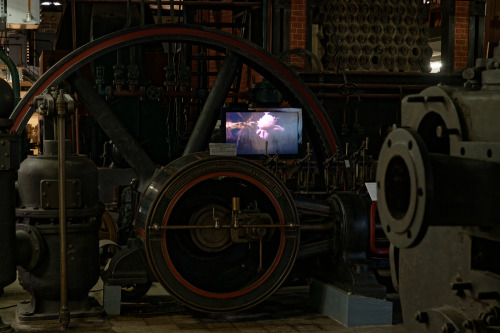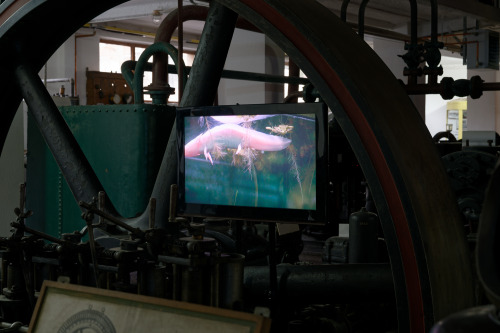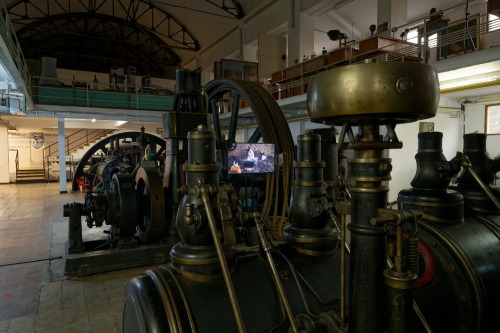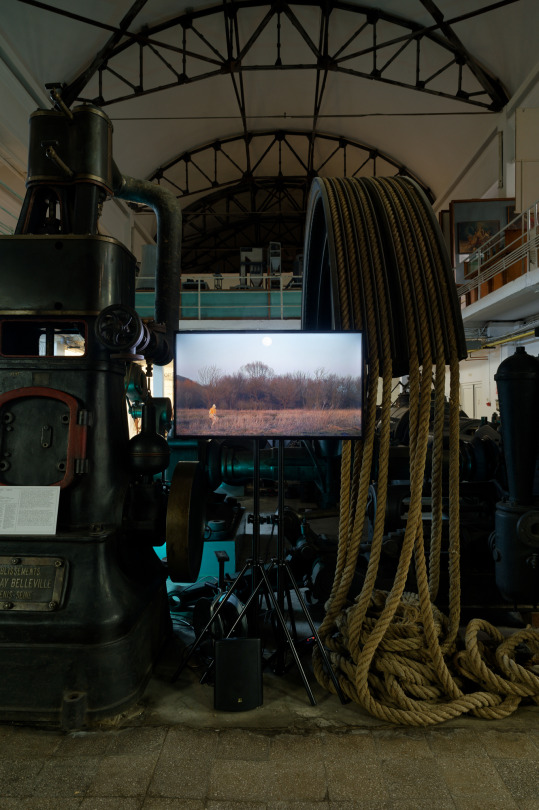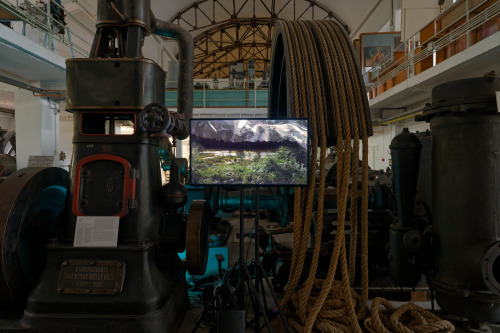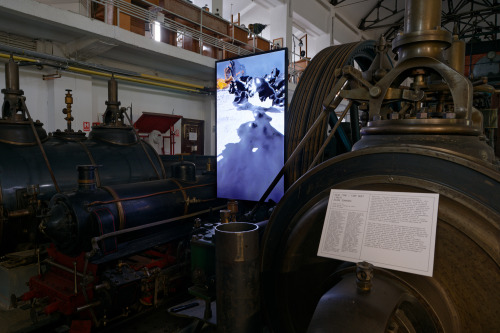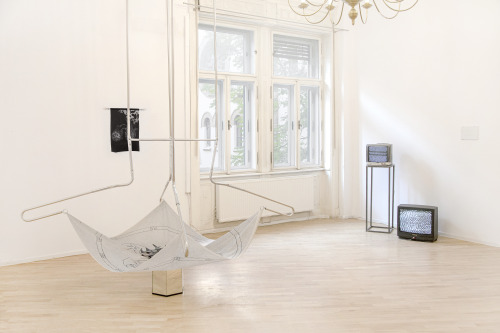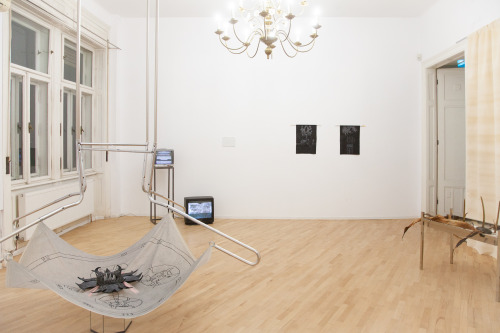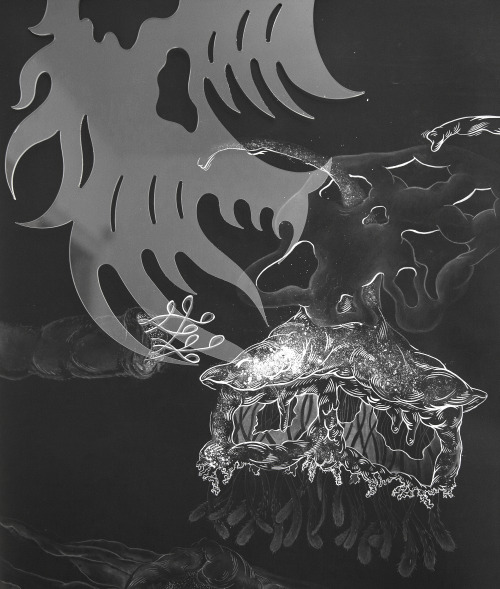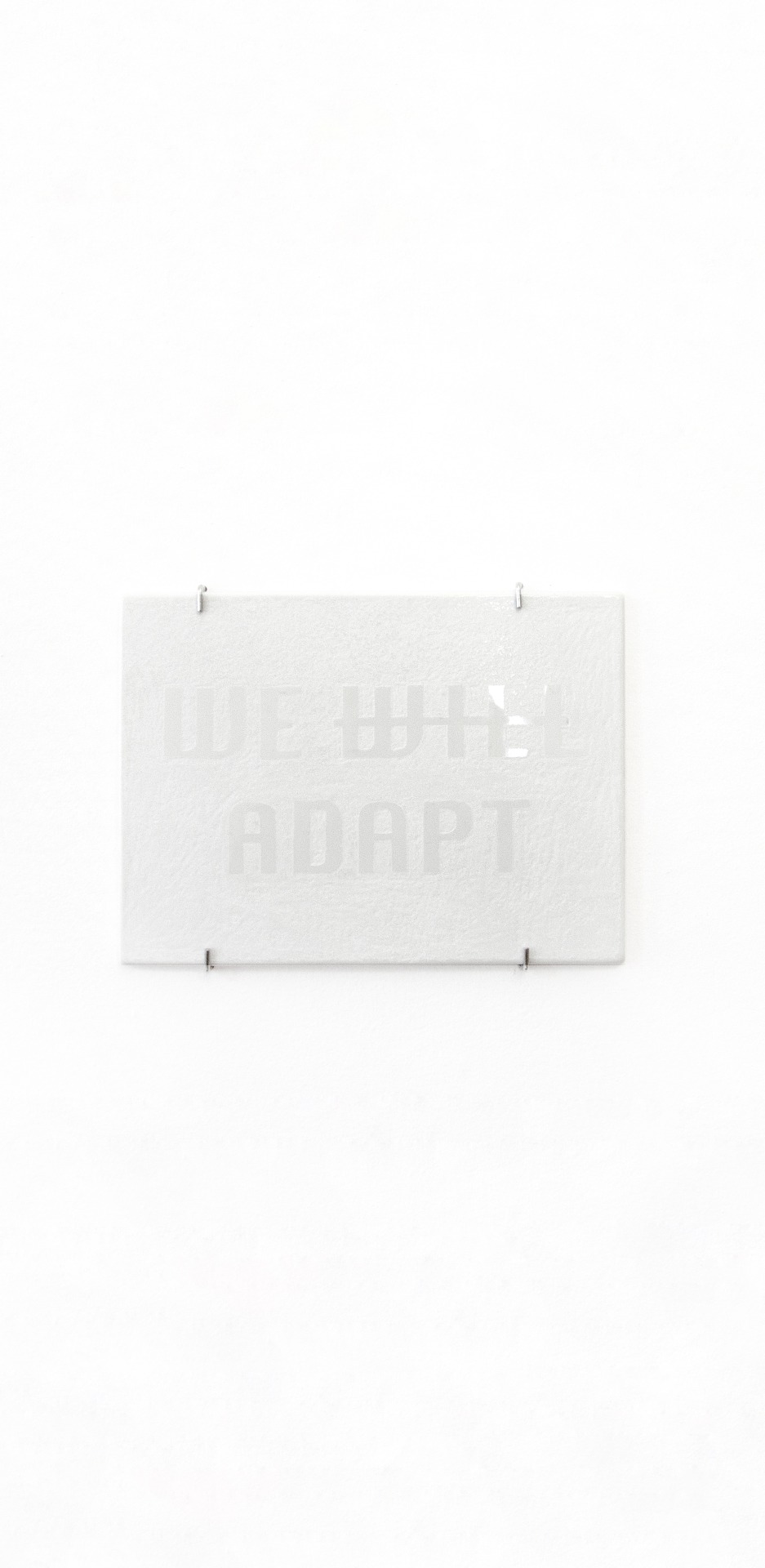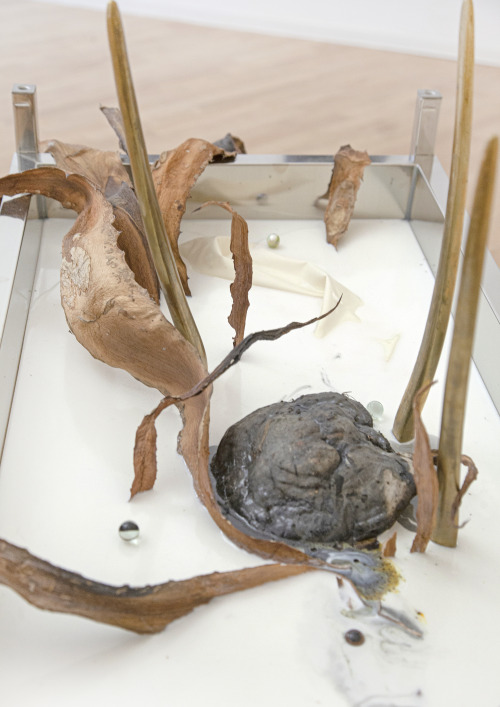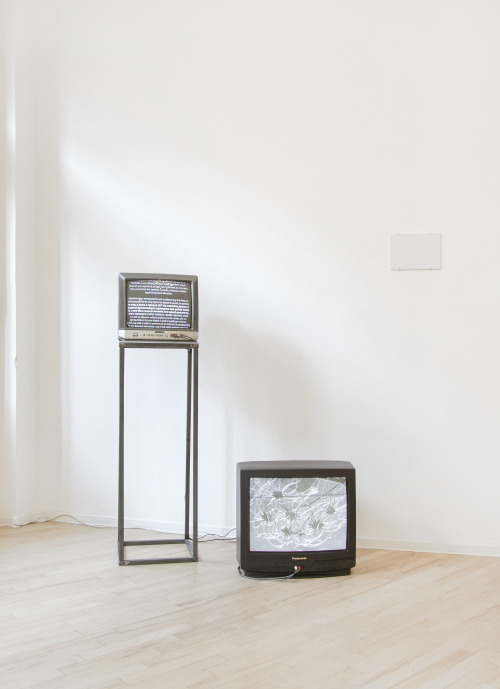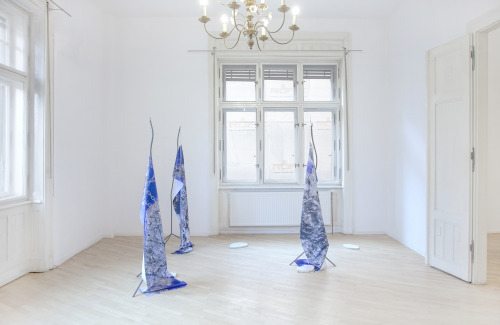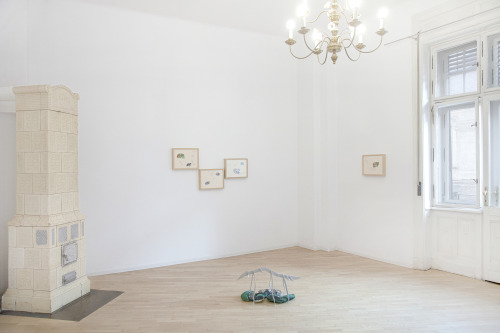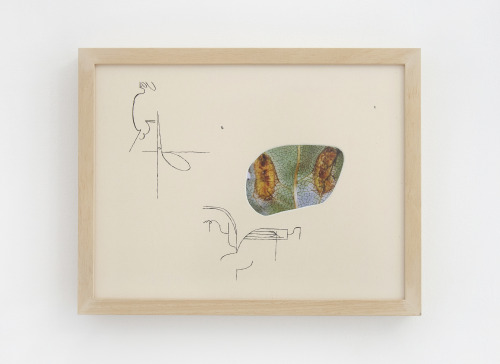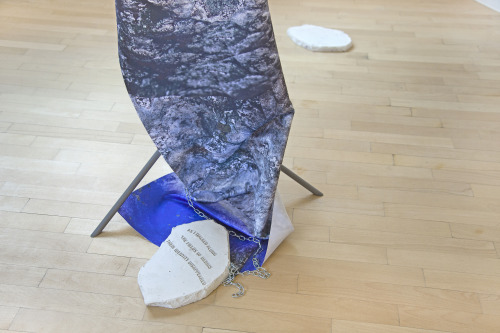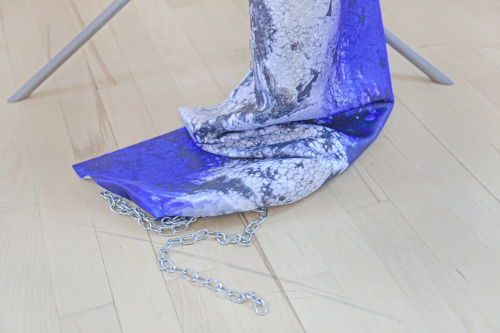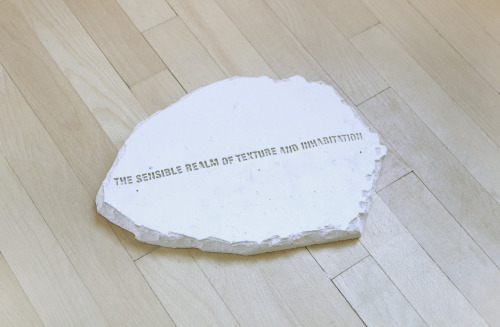Projects & Exhibitions:
- // Before the Upcoming
- // Multispecies Landscape
- // Habitats of Sensing
- // In Parallel Universes Different Things Happen
- // There Are Dreams That Walk With Us in Our Shadowy Reality
- // ppm#5 @ the workplace
- // At the Center of the World there is a Fiction
- // ppm #4 | copy art show
- // Turrorism all inclusive
- // Dreams that Happened
- // Where do we go from here
- // I would live in a birdhouse
- // ppm #3 | copy art show
- // You Can Meet Me Anywhere
- // The Birthday of an Android not yet Installed
- // ppm #2 | copy art show
- // On Failing
- // ppm | copy art show
- // berlininclujinberlin
- // In Plain Sight
- // Surface Geometries
- Home
- About
- Contact
-
Before the Upcoming
Cătălina Bucos & Ada Kopaz
András Cséfalvay & Lukáš Likavčan
Diane Edwards
Alice dos Reis
T(n)C
Anna Zilahi & Laura Szári feat. Varsányi Szirének09.11.2023 - 26.11.2023
Technical Museum Dimitrie Leonida, Bucharest
in collaboration with SATELIT MatkaIn the halls of now silent machines, the curatorial collective 𝐀𝐢𝐜𝐢 𝐀𝐜𝐨𝐥𝐨 presents six contemporary video artworks that poetically address current techno-science effects and ecological sensitivities. Set in a sci-fi context of a near future, the exhibition stimulates conversations that challenge the undying modernist narratives of endless progress.
𝐑𝐞𝐜𝐨𝐫𝐝 𝐅𝐢𝐥𝐞: 𝐀𝐀-𝟐𝟎𝟒𝟗-𝟎𝟓𝟓 𝐌𝐓
This record documents a peculiar event from Section B 22-39, involving relics from the archive of bygone technologies. Back in 2023, the artefacts housed within this specific area of the formerly known Technical Museum exhibited what scientists refer to as “extraordinary and unusual behaviour.”
Observation Report: It is now acknowledged that the early signs of the phenomenon went unnoticed, flickering projections eluding the staff’s attention for several days. As decades-old neons bathed the museum’s hallways in eerie glows, various testimonies attested that the entire building reverberated with mysterious messages, their echoes reaching far beyond the archive’s confines.
Historical Context: During that period, a complex interplay of science, politics, and nature, defined a turbulent planet, with technology promising ever better futures. But beneath the surface of this familiar story of brighter tomorrows loomed an unspoken awareness of the global environmental shifts. Some likened this era to the Fourth Industrial Revolution, with daily lives and bodies inseparable from technological influence. Devices subtly shaped behaviours, diligently collected data, and lulled individuals into endless dreams. Yet, an unsettling feeling persistently haunted these quests for the so-called human improvement.
Research Questions: What dwells in the peripheral vision, beyond the familiar surroundings? What were the untold stories whispered by these artefacts, echoing in a world slowly succumbing into environmental decay? To whom or to what did these echoes call?
Additional Notes: In the wake of the enigmatic event, some of the museum’s personnel reportedly experienced hums connecting them to bodies, not only human ones, in a fluid and affectionate way. Choral chants helped some reclaim forgotten landscapes, while others ventured beyond the digital confines, with resilience and calm. Notably, two researchers claim to have suddenly been relocated to the cosmic surroundings of Pluto, reviving the lost ties between science and mythology upon their return.
Conclusion: The captivating inventory recovered in AA-2049-55 opens a complex discussion about hidden stories, the unacknowledged consequences of our technological pursuits, and the resurgence of much-needed other stories surviving across unstable temporalities.Text by Edith Lázár
SATELIT is a project of MATKA Association in Bucharest, which supports young, emerging and multidisciplinary initiatives on the contemporary art scene in Romania.
Project co-financed by AFCN and ARCUB
-
-
Missa Echologica (2021)
Anna Zilahi & Laura Szári & Varsányi Szirének choirVideo 14:36 min
Booklet A4 52 pages
Varsányi Szirének choir: Blanka Bolonyai, Dóra Ferenczy, Bettina Horváth, Dóra Király, Rita Szántó, Laura Szári, Diána Takács, Eszter Tóth, Virág Török, Anna Zilahi.
Video: Gergely Ofner
Sound: Ferenc JuhászThe echo of Tihany is a sound phenomenon that also has a notable place in Hungarian cultural history. Tracing back centuries, legends of the Echo tell the story of a young girl rejecting the son of the king who fell in love with her and her voice. As revenge, he drowned her and turned her into an echo, cursed to only repeat other people’s voices.
From a critical feminist perspective, this legend is not a tale about a selfish girl who deserves to be punished, but a story of patriarchal retribution, a punishment for a woman saying no.
The echo has faded in recent decades, but it has not entirely disappeared. The change can be linked to the destruction of the ecological environment due to infrastructure and tourism, altering the the sound-environment.
Ecological destruction and patriarchal oppression are rooted in the same logic of power. Missa Echologica is an ecofeminist appropriation of this legend, a hymn for the liberation of Echo and the suppressed ecological forces of the small fishing village of Tihany. The choir piece is based on catholic liturgical hymns called antiphons.
Anna Zilahi is a poet and transmedia artist. Her often participatory text- and sound-based works focus on questions of society, ecology, and feminism. She graduated at the University of Applied Arts in Vienna in 2021. She is a co-founder of the Budapest-based xtro realm artist group whose work addresses non-anthropocentric and ecological strands of thought since 2017. She is doing her doctoral art studies at Moholy-Nagy University of Art and Design in Budapest.Laura Szári is the self-taught choir leader of the Budapest-based feminist women’s choir called Varsányi Szirének. The choir’s main purpose is to create a singing place where creativity, joy and acceptance fuse to facilitate the members’ common voice about topics they are interested in and to simply provide a space to sing pop-songs together.
-
The Moons of Pluto (2021)
András Cséfalvay & Lukáš LikavčanVideo 7:27 min
A collaborative work between visual artist András Cséfalvay and philosopher Lukáš Likavčan, The Moons of Pluto is an audiovisual commentary on the cosmological role of science. In the spirit of writer Sylvia Wynter, it recuperates the notion of the human as a storyteller and myth-maker as it surveys narratives about ancestrality and cosmic origins in the Western scientific-tradition, usually obscured by the modernist insistence on secular rationality. Elements of astronomy, physics, metaphysics and Earth-system sciences are enacted as planetological figures – the five moons of Pluto (Charon, Kerberos, Nyx, Styx, and Hydra) – whose stories weave together a web of associations that reflect on the cosmic background of the Western culture, and that of science as a discipline.
András Cséfalvay is a visual artist, digital storyteller, and mytho-poet from Bratislava, currently teaching at the Academy of Fine Arts in Bratislava. He studied painting and mathematics and wrote a dissertation on the usefulness and reality of fiction. He delves into the relationship between culture and technology and the political and ethical aspects of listening to non-dominant voices in world interpretation. His latest works look at the relationship between astronomers and indigenous peoples in constructing the Mauna Kea telescopes, the flight of dinosaurs as a technology for survival after extinction, and the reclassification of the planet Pluto. He is a receiver of the Oskar Čepan Young Visual Artist Price, a member of The New Centre for Research and Practice, and a co-founder of the Digital Arts Platform at the Academy of Fine Arts in Bratislava.
Lukáš Likavčan is a Global Perspective on Society Postdoctoral Fellow and research affiliate at the Center for AI & Culture at NYU Shanghai. His areas of expertise cover philosophy of technology and environmental philosophy. He is the author of Introduction to Comparative Planetology (Strelka Press, 2019). Previously, Likavčan studied philosophy at Masaryk University and obtained his Ph.D. in environmental studies. He also held visiting research positions at Wirtschaftsuniversität Wien and The Hong Kong Polytechnic University; faculty positions at Strelka Institute for Media, Architecture, and Design as well as the Center for Audiovisual Studies FAMU in Prague. -
The Flies Hum thy Name (2021)
Cătălina Bucos & Ada Kopaz10:15 min
Trying to reflect on the relationship between body, gender, environment and public space, we began the deconstruction of our own bodies and their limitations, which we then transformed into a poetic video work. The film merges images of Super8 and digital footage with self-written poetry and self-performed choreography. The performers are in an empty, dry swimming pool, and simultaneously in an imaginary space overlapped with projections of water. We witness a sequence of tragic allegories: impossible desires, cyborg bodies, a flooded and polluted environment. The two seek for the public in the private, they are longing for the origins: the watery feel of the womb, for being one with themselves and with nature. Unity is found within the process.
Cătălina Bucos
Coming from the East to the West, I currently study media arts and film at the Academy of Media Arts in Cologne. I was born and grew up in the Republic of Moldova, in the midst of its ever transition from Socialism to Capitalism — an environment that has naturally radicalised me. Starting with producing DIY chic house decorations, performing children ballet or NGO social spots, to creating politically engaged fine art prints, text works, sound installations, performances, protesting flags, bedroom produced experimental videos or fictional films my body of work is a critical-political, chaotic-systematic search for narratives and formats that allow themselves to be angry, joyful or touching.
Ada Kopaz
Ada Kopaz was born in Köln in 1987. He studied Fine Arts with Hito Steyerl at Universität der Künste in Berlin and graduated in 2015. In late ‘19 he started Diplom II at KHM, Köln, where he studies with Phil Collins and Isabell Lorey (o.a). He commits to power structures within public space, commons, discourse and the questions of accessibility to these. Besides photography as everyday practice, he works with fly-posting, installation, sketches, video and sound. As part of ZUGANG collective he has been documenting Berlin’s „Corona-Pro- tests“ since 03/20. Together with other artistic and activist groups they performed and plan interventions in public space and work on a long-film to be presented later this year.
-
Mood Keep (2018)
Alice dos ReisVideo 13:51 min
Directed and Edited by: Alice dos Reis
With: Alice dos Reis, Bin Koh, Danae Io
Text and Voice: Alice dos Reis
Sound: Emile Frankel
Camera: Alice dos Reis, Wyatt NiehausMood Keep focuses on the critically endangered Mexican axolotl, a water creature with regenerative abilities that refuses to metamorphose into maturity. In the film, set in the near future, the world population of captive axolotl has had enough of the aggressive electric lights of their aquariums. Communicating via wireless waves and watching anime telepathically, they decide to develop eyelids to shut their eyes, reclaim the agency of their bodies and encourage empathic communication.
In charting the connections between the axolotl’s post-colonial history, unique - almost unearthly - biology, and recent online popularity as one of the world’s cutest creatures, the work seeks to trace the prevalence of cute imagery in contemporary semiotics.
Alice dos Reis is an artist and filmmaker. She has exhibited, solo and in group, at the Serralves Museum for Contemporary Art (Porto), Kunsthalle Lissabon (Lisbon), Gallerie D’Italia (Torino), 5th Istanbul Design Biennale (Istanbul), RADIUS CCA (Delft), Porto Municipal Gallery (Porto), PuntWG (Amsterdam), Display (Prague), Gallery and Lehmann + Silva, among others. Her films have been shown at the Palais de Tokyo (Paris), EYE Film Museum (Amsterdam), Platform Vdrome, and Museum of the Moving Image (NYC), as well as in various international film festivals. Recently Alice was a recipient of Fundacion Botin Visual Arts Grants (2022-2023). She co-runs Pântano Books, an independent poetry press.
-
The Tent (2021)
T(n)CVideo: 18’53
Sound: Rojin Sharafi
3D art and animation: Tímea Strott
Additional camera: Péter Várnai.The last drops dried up. The promise of endless growth did not come true. Society evaporated into an endless thirst for self-optimization, youth and immortality. Humans sit in temporary dwellings with chaotic dreams and never-ending anticipation, but it is a dying planet. Two protagonists set out on a quest to break out of this drought. They are like heroes, born in a bleached-out vision of paradise. They seek an invisible place that everyone knows about, yet few have experienced. A physical site that spreads in time and space, one can observe only a piece of it, never the whole. Navigating this unknown, they go through a liberating act of transformation: they pull out everything they know, soak in, and relearn! As humanity’s concerns seem too complex to relate just to the individual, ‘The Tent’ moves through the unconscious and questions common cultural images and symbols.
T(n)C was founded in 2017 by Agnes Varnai and Tina Kult. They live and work in Vienna and experiment with a wide range of media, including virtual reality, 3D, installation, sculpture and film. By combining the different disciplines, they are researching immersive experiences to connect the digital and physical levels of realities. T(n)C believes in the power of joint efforts. Their aim is to expand the practices of collective storytelling with a collaborative approach. The collective’s works have been exhibited at: Kunstraum Niederoesterreich (AT), projectcell36 (AT), WIENWOCHE (AT) or Art+Text (HU). They were part of Vienna Design Week, Rencontres Internationales Paris/Berlin and re;publica festival in Berlin. In 2022, they participated in the European Media Art Platform residency at FACT, Liverpool.
-
Dead Time (2019)
Diane EdwardsVideo 11:35 min
Sound design: Donna Haringwey
Dead Time probes questions of the contemporary developments of automation, networked society, digital agents and the addictive nature of data-driven applications. We now find ourselves on the cusp of a Fourth Industrial Revolution where complex computational systems have become second nature, embedded within all aspects of life. The project draws a parallel between sugar and data/data-driven applications; both being the most valuable commodities of their time along with their shared schizophrenic nature, providing happiness, delight and enjoyment whilst also having darker insidious realities of addiction, power and control, to name a few. We are entranced by our divisive devices, enslaved in invisible labour, stuck within the loop, from individual to integer, repeating our function until we have overindulged in nauseating waves of informatic eye candy.
Diane Edwards is an artist working across digital art, moving image, sculpture and installation. Drawing parallelisms between psychological and synthetic landscapes, she explores the tension created by digital and physical spaces. Her research recreates junctions and disjunctures between computation and real life, organic and artificial bodies, while paying attention to the emotions that surface from such a turbulent tangle. Recent projects have been exhibited at: Future Fantastic, Bengaluru (India); Future Everything, Manchester; Transmediale, Berlin; Foreign Object (online); Museum Ratingen, Germany; Cryptic, Glasgow; Piksel Festival, Bergen; Glasgow International; S.L.I.C.E, Berlin; Quartier am Hafen, Cologne; +DEDE, Berlin; Shipment, London; Chalton Gallery, London; Die Digitale Festival, Dusseldorf. Diane Edwards also co-runs the artist-run organisation Gossamer Fog, London.
-
Multispecies Landscape
Andreea Anghel
Mimi Ciora29.10. - 14.11.2021
As part of our 2021 program, Middle Grounds and Dissonances tackling the ever-complex processes of collaboration, we invited four artists to work together in the frame of intensive laboratories during this summer. The shows are the result of cooperation and exchange, sharing ideas that come together and then drift apart.
Our first artists-in-laboratory, Andreea Anghel and Mimi Ciora draw from their common interest in the adaptability and intelligence of plants in relation to the habitats where they grow, to develop a collaborative research process. In Multispecies Landscapes the artists present a series of works that developed together, complementing each other, while they relied on mechanisms of cooperation, cohabitation, and communication. It is a process where they’ve come to think of themselves as interacting organisms during their residency, following Anna Tsing’s beautifully quote that: ‘no organism can become itself, without the assistance of other species’, and as such, we are never alone.
Project co-financed by The Administration of the National Cultural Fund. The project does not necessarily represent the position of The Administration of the National Cultural Fund. AFCN is not responsible for the content of the project or how the project results can be used. These are entirely the responsibility of the beneficiary of the funding.
Partners: Indecis, spam-index, Revista ARTA, Fabrica de Pensule, Punch, Universitatea de Artă și Design Cluj-Napoca, Centrul Cultural Clujean, Autumn School of Curating.
Design credit: Flavius Augustin
-
-
-
-
Habitats of Sensing
Mihaela Vasiliu (Chlorys)
Lera Kelemen29.10. - 14.11.2021
In Habitats of Sensing, Mihaela Vasiliu (Chlorys) and Lera Kelemen approach the felt world by looking at living textures, and what they envelop, as nets that can already nurture safe spaces. Throughout her research, Chlorys references non-human biology, thinking of a potential regression into a more fluid state of larvae, a pre-traumatic body as a promise for other possibilities of being. In contrast, Lera Kelemen’s works explore boundaries between current spaces of intimacy, with surfaces that bring up a feeling of privacy, through mashed-up references of the built environment’s debris and natural elements.
As part of our 2021 program, Middle Grounds and Dissonances tackling the ever-complex processes of collaboration, we invited four artists to work together in the frame of intensive laboratories during this summer. This show, together with Multispecies Landscapes, are the result of cooperation and exchange, sharing ideas that come together and then drift apart.
Project co-financed by The Administration of the National Cultural Fund. The project does not necessarily represent the position of The Administration of the National Cultural Fund. AFCN is not responsible for the content of the project or how the project results can be used. These are entirely the responsibility of the beneficiary of the funding.
Partners: Indecis, spam-index, Revista ARTA, Fabrica de Pensule, Punch, Universitatea de Artă și Design Cluj-Napoca, Centrul Cultural Clujean, Autumn School of Curating.
Design credit: Flavius Augustin -
-
There are dreams that walk with us in our shadowy reality
Maria Băcilă
Lorena Cocioni
Nicoleta Mureș
Mihaela Vasiliu (Chlorys)13.05 - 01.07.2021
Aici Acolo x RUBIK Space
Anton Pann 16, Cluj‘In sleep, we were consumed by the feverish life of the earth, cast among a ripe, fairly rotting world of strange growths and transformation’ – Thomas Ligotti. The Shadow at the Bottom of the World
But in our era of no-sleep, moving around surrounded by a radiant blue halo of multiple screens, where does this mysterious land of dreams reside? And what if this isn’t a place, but something else that’s breaking through, lurking?
The bizarre architecture of dreams, scientists seem to declare, isn’t a logical error, but actually a form of thinking in another biochemical state. In them, it’s not the bodies that dissolve, as the lack of gravitational forces might suggest, but the heavy burden of social constructs. Dreamworlds generate scenarios for dealing with what comes up, and can create breakthroughs for whatever needs resolving, just not in the order that the everyday dictates. There are many worlds we seem to access in dreams, so as to look at things with new eyes.
Dreams, then, feel more like a cumulonimbus, a cloud organically gathering information, menacing with its many layers and textures. In the calm before the storm, one can watch it expand and breathe like any organism, allowing the richness of experience to register.*
*this was once revealed to me in a dream.
There are dreams that make their way out, that walk with us in our shadowy reality, as moods, atmospheres and sensorial magnetisms which we can’t properly name.
So here is where we meet, in the cumulonimbus, at the crepuscule – where the night hasn’t fully cast its shadow, nor the day still shines its bright.
Curators: Aici Acolo Collective
Rubik was a platform for identifying, connecting and consolidating independent artistic initiatives deeply affected by the aggressive growth of the real estate market in Cluj-Napoca – a project of the Paintbrush Factory Federation, curated by Alexandra Mocan and Matei Toșa, in collaboration with Lateral ArtSpace Association, Young Actions and Abstractions Association (Aici Acolo Pop-Up Gallery) and the initiatives Grota and Gara Mică.
Cultural project co-financed by the National Cultural Fund Administration. The project does not necessarily represent the position of the National Cultural Fund Administration. AFCN is not responsible for the content of the project or how the project results can be used. These are entirely the responsibility of the beneficiary of the funding


